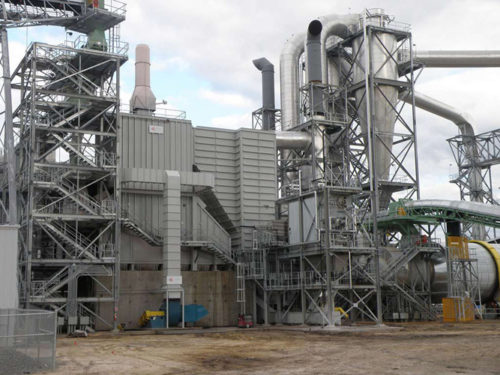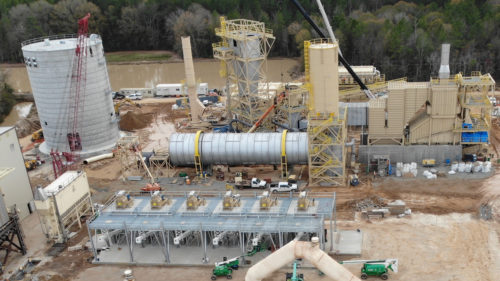Biomass Energy Systems
With decades of global experience in the energy industry, Sigma Thermal knows how to provide robust industrial solutions designed and engineered to meet even the most demanding client specifications. Our biomass fired energy systems provide minimal emissions and finite combustion control, all while accepting a wide range of waste fuels with varying sizes, chemical compositions, and moisture content.
Sigma Thermal’s reciprocating grate furnace allows for the efficient, complete combustion of waste materials with high ash, high moisture content and low heating value. Keep reading for more information about how these systems work as well as the different energy delivery systems that we offer.
 How Does a Biomass System Work?
How Does a Biomass System Work?
Biomass energy systems all generally consist of three components—fuel handling, ash handling, a furnace, and a control system. Biomass equipment employs these four systems to convert raw organic material into fuel in a series of steps:
- Fuel preparation. Before biomass equipment can effectively handle raw material, it must process and prepare the biomass used for fuel production. Solid, liquid, and gas biomass all require different processing techniques to ensure consistency and efficiency, such as drying, screening, grinding, and separating.
- Fuel intake and handling. The fuel handling system includes the initial feed and an intermediate storage bin. Fuel moves from the feed to the storage bin, where specialized equipment measures it out and subsequently distributes it into the furnace and onto the reciprocating grate.
- Material combustion. Biomass energy systems heat and combust the prepared materials with process heating equipment, achieving drying and gasification by creating hot gases that will move along through the next steps of the process.
- Gas capture. Newly created hot gases move through two chambers, the upper combustion chamber and the secondary combustion chamber, which capture and store the gases for future use. Burning biomass for energy generates carbon dioxide as a byproduct, so proper gas capture and removal is crucial to keeping carbon emissions low.
- Ash handling. Lastly, the ash handling system captures the grate ash byproduct, which is dropped from ash hoppers to the ash conveyor. This conveyor is submerged underwater for improved ash management and transports the ash outside of the system where it can be collected and disposed of.
Energy Delivery Systems & Equipment for Enhanced Performance

Bio energy systems provide several benefits over traditional energy generation solutions, including enhanced performance, efficiency, and more. Biomass fired energy systems are a source of renewable energy, which makes them eligible for a host of benefits like Renewables Energy Certificates (RECs) for each MWh of power created or even process heat RECs. . Not only is biomass renewable, but it also boasts carbon savings that have both environmental and financial benefits, especially in the industrial sector.
Biomass energy delivery systems are also incredibly efficient regarding total cost and material usage. Advanced gasification technology like the processes described above can have up to 80-90% thermal efficiency, which drastically reduces input costs and expands profit margins. Operational fuel cost savings and reduced fuel price volatility are other key benefits of biomass energy since organic waste energy sources are much more available and abundant than nonrenewable sources of fuel. Finally, biomass fired energy is considered an efficient combined heat and power (CHP) system as it simultaneously generates both heat and electricity.
At Sigma Thermal, we offer several different types of energy delivery systems:
- Biomass Fired Hot Gas Generators. These systems cleanly generate hot gas for direct heating requirements.
- Biomass Fired Thermal Fluid Heaters. Built for indirect heating, these systems use thermal oil or fluid.
- Biomass Fired Steam Boilers. Steam boilers generate steam directly from wood-fired furnaces.
- Thermal Oil to Steam Generation. These systems use a thermal oil heat exchanger to generate low-pressure steam.
Let Our Process Heating Experts Assist You
Partner with our team of industry veterans to unlock the benefits of bio energy systems. From highly engineered process heating equipment to standard packaged heaters, Sigma Thermal’s dedicated experts know how to find the perfect biomass energy systems for your individual needs. We believe that successful energy delivery systems require not only advanced industry knowledge and applied field experience but also exceptional customer service every step of the way. These three keys to success bind our team together and provide a powerful framework for consistently crafting exceptional biomass equipment and processes.
For more information about our biomass energy systems, contact us or request a quote today.






